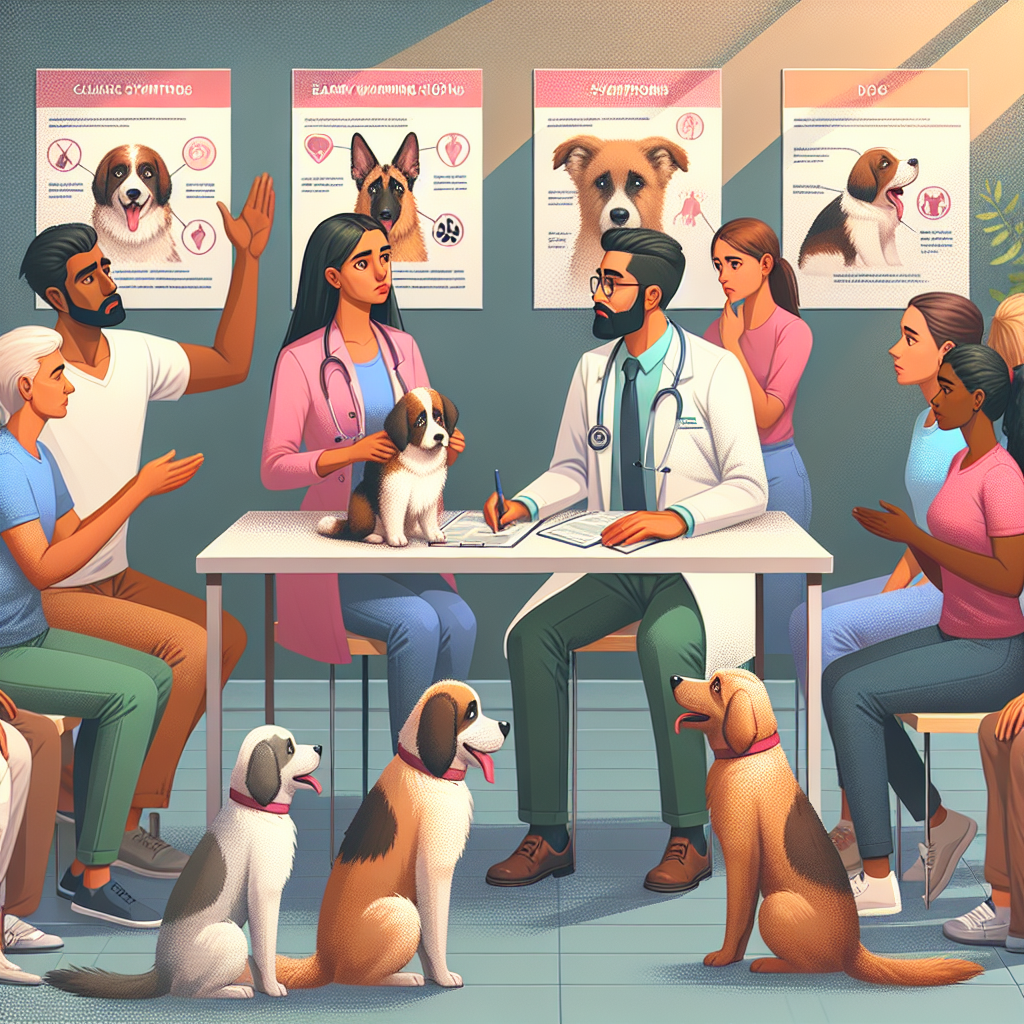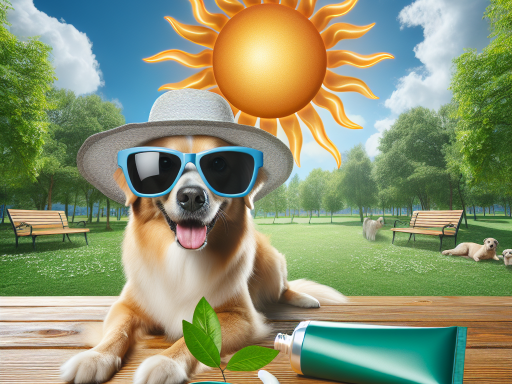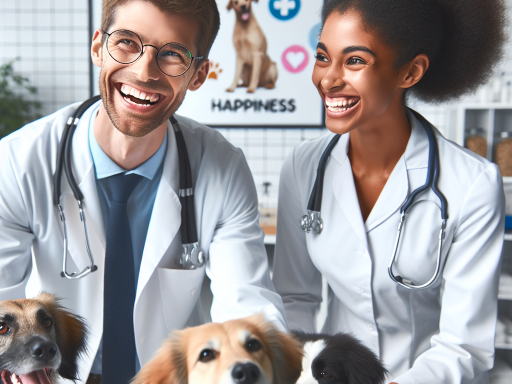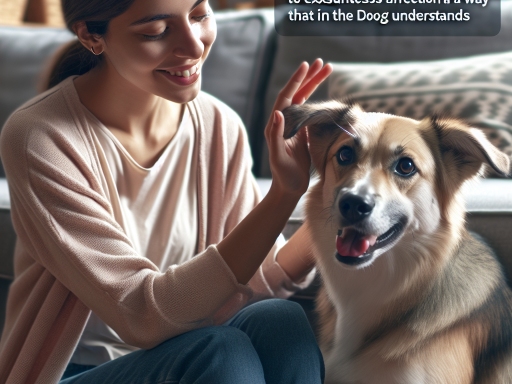Introduction to Canine Cancer Detection
Hey there, dog lover! We all adore our furry friends and would do anything to keep them happy and healthy, right? One of the scariest topics for any pet owner is cancer, but here’s the good news: early detection can make a world of difference. Let’s dive into how we can become more aware of the signs and symptoms of cancer in our canine companions.
First, it’s important to understand that dogs, just like humans, can get cancer. In fact, about one in four dogs will develop some form of cancer in their lifetime. But don’t fret! With some knowledge and vigilance, we can catch potential issues early and improve our furry friends’ chances of a full recovery.
Why Early Detection is Crucial
Early detection can be life-saving. Just like in humans, the sooner cancer is found in dogs, the better the chances of effective treatment. Think of it this way: spotting the signs early is like giving your pup a head start in the race against cancer.
Veterinarians emphasize the importance of regular check-ups, because even the most vigilant pet owners might not catch the subtle signs. Your vet can perform comprehensive exams and may even recommend regular screenings, especially for breeds that are more prone to certain types of cancers.
Understanding Common Cancer Types in Dogs
There are several types of cancer that commonly affect dogs. Here are a few:
- Lymphoma: Affects the lymphatic system and is one of the most common cancers in dogs.
- Mast Cell Tumors: These tumors can appear anywhere on the body and are a type of skin cancer.
- Osteosarcoma: This is a bone cancer that’s more common in larger breeds.
- Mammary Gland Carcinoma: This affects the mammary glands and is more common in female dogs.
Knowing the common types helps us understand what to look out for, but each dog is unique. That’s why a tailored approach for your specific dog, considering breed, age, and health history, is essential.
What Can You Do?
Alright, so what can you do to help detect cancer early in your dog? Here are some proactive steps:
- Regular Vet Visits: Schedule routine check-ups. Your vet can spot things you might miss.
- Monthly Health Checks: At home, you can perform monthly checks. Feel for any unusual lumps or bumps, and take note of any changes in behavior or health.
- Know Your Dog’s Norm: Be observant. Knowing what’s normal for your dog makes it easier to spot when something’s off.
- Keep Records: Maintain a health journal. Note down any changes in weight, appetite, or energy level.
Remember, while it’s important to be vigilant, you don’t need to panic at every little change. However, it’s always better to be safe and consult your vet if you notice anything unusual.
The Power of Knowledge
Empowering yourself with knowledge about canine cancer detection is one of the best things you can do for your dog. It’s about being proactive rather than reactive. By understanding the signs and taking swift action, you can help ensure your pup lives a long, healthy, and happy life.
So, keep loving those furry faces, stay observant, and always consult your vet with any concerns. Your dog’s health is worth it!
Unexplained Weight Loss
Hey there, fellow dog lover! 🐶 Have you ever noticed your furry friend shedding pounds without any apparent reason? It can be pretty puzzling and concerning, right? Well, you’re not alone. Unexplained weight loss in dogs can be a sign of several underlying issues, including, yes, the big C—cancer. But don’t freak out just yet. Let’s dive into what you should look out for and what steps to take if your pup starts slimming down without hitting the doggy gym.
Why is My Dog Losing Weight?
First things first, dogs can lose weight for a variety of reasons, some of which are benign, while others are more serious. Here are a few common causes:
- Dietary Changes: Have you switched your dog’s food recently? Sometimes, a new diet might not provide the same calorie intake or nutrients.
- Increased Activity: If Fido has suddenly become more active, whether it’s chasing squirrels or playing fetch, he might be burning more calories than usual.
- Stress: Just like us, dogs can lose weight when they’re stressed or anxious.
- Parasites: Yuck, we know, but intestinal parasites could also be a culprit.
When to Suspect Cancer
Okay, back to the topic at hand—cancer. Unexplained weight loss can sometimes be an early sign of cancer in dogs. According to vets and pet health experts, here are some red flags to watch for:
- Gradual Weight Loss: If the weight loss is slow and steady, over weeks or months, it could indicate an underlying issue rather than a temporary problem.
- Loss of Muscle Mass: Noticeable loss of muscle, particularly around the head and hips, can be a sign of a more serious condition.
- Other Symptoms: Accompanying symptoms like lethargy, vomiting, or diarrhea should ring alarm bells.
What Should You Do?
If you notice your dog shedding pounds without an obvious cause, don’t panic, but do take action. Here are some steps to follow:
- Track the Weight Loss: Keep a journal of your dog’s weight over a few weeks. This will help your vet get a clearer picture of what’s going on.
- Consult Your Vet: Make an appointment with your vet to discuss your concerns. Bring your journal and any other symptoms you’ve noticed.
- Diagnostic Tests: Your vet may recommend blood tests, X-rays, or ultrasounds to rule out or confirm cancer.
Staying Positive
We know the thought of cancer can be scary, but remember that early detection is crucial and can make a huge difference. Your vet is your best ally in this situation. They’ll guide you through the diagnostic process and, if necessary, treatment options. Many dogs with cancer live happy, fulfilling lives with the right care and attention.
So, keep an eye on your pup’s weight and overall health, and don’t hesitate to reach out to your vet with any concerns. Your furry friend is counting on you to be their advocate and best friend, through thick and thin! 🐾
So, you’ve noticed something strange on your furry friend – a persistent sore or wound that just doesn’t seem to heal. It can be worrying and confusing, but don’t panic just yet. Let’s delve into what these sores or wounds could mean for your canine companion.
What to Look For
First things first, keep an eye out for any sore or wound that doesn’t show signs of healing within a reasonable amount of time. This could be a cut, scrape, or lesion that just won’t go away, despite your best efforts to clean and care for it. If you notice any of these persistent issues on your dog, it’s time to take action.
Possible Causes
There are several reasons why your dog may have a sore or wound that won’t heal. It could be due to a simple infection or irritation, but it could also be a sign of something more serious, like cancer. While it’s important not to jump to conclusions, it’s crucial to have your vet take a look to rule out any underlying health issues.
What to Do Next
If you notice a sore or wound on your dog that doesn’t seem to be getting better, don’t delay in seeking veterinary care. Your vet will be able to examine the area, run any necessary tests, and provide you with a diagnosis and treatment plan. Remember, early detection and treatment are key in ensuring the best possible outcome for your furry friend.
Prevention Tips
While it’s not always possible to prevent every sore or wound in your dog, there are some steps you can take to help minimize the risk. Keeping your dog’s skin clean and healthy, providing a balanced diet, and regularly checking for any abnormalities can all go a long way in preventing issues from developing in the first place.
Conclusion
So, if you notice a persistent sore or wound on your dog, it’s important not to ignore it. While it may be nothing serious, it’s always better to be safe than sorry when it comes to your furry friend’s health. Remember, your vet is there to help and provide the best care possible for your beloved canine companion.
Abnormal Swelling or Lumps
Hey there, fellow dog lovers! We all adore our furry friends, and their health is always top of mind for us. One thing that can set off alarm bells as a pet owner is discovering a lump or swelling on your dog’s body. Don’t panic immediately, but it’s crucial to know the signs and take the right steps if you notice something unusual.
Why It’s Important to Pay Attention
First things first, not all lumps are bad news. Dogs can get benign (non-cancerous) lumps like lipomas, which are just fatty deposits and often harmless. However, some lumps can be more serious and warrant a closer look. Detection of any abnormal swelling or lump can be an early indicator of cancer, and catching it early could potentially save your furry friend’s life.
What to Look For
So, what should you be looking out for? Here are some key signs to keep in mind:
- Size: Note the size of the lump. Is it small and pea-sized or larger? A larger lump, or one that grows quickly, deserves a vet’s attention.
- Location: Pay attention to where the lump is located. Some areas, like the mammary glands, can be more prone to malignant lumps.
- Texture and Feel: Does the lump feel hard or soft? Is it movable or fixed in place? Cancerous lumps tend to be hard and immovable.
- Pain or Discomfort: Observe if your dog reacts when you touch the lump. Painful swelling could indicate a problem.
- Other Symptoms: Look for other signs like redness, heat, or changes in skin color around the lump.
What to Do if You Find a Lump
Finding a lump can be worrying, but here’s what you should do:
- Stay Calm: Don’t panic. Keep calm for both your sake and your dog’s. Remember, not all lumps are cancerous.
- Examine the Lump: Take note of the size, shape, and other characteristics of the lump. It can be helpful to jot down some notes or even take a picture for reference.
- Consult Your Vet: This is the most crucial step. Make an appointment with your veterinarian as soon as possible. They may perform tests like a fine-needle aspiration or a biopsy to determine the nature of the lump.
- Follow-Up: If the lump is benign, your vet might suggest keeping an eye on it. If it’s malignant, they’ll discuss treatment options with you.
Staying Proactive
As a proactive pet parent, regularly checking your dog for any unusual lumps or swellings is a good practice. Feel around their body during grooming sessions or cuddles. It’s a great way to catch any potential issues early.
Remember, early detection is key when it comes to dealing with any health issues, including cancer. By being vigilant and acting promptly, you’re giving your furry friend the best chance for a healthy and happy life.
So, stay observant, keep those vet appointments, and give your dog all the love and care they deserve. They’re counting on you!
Sudden Changes in Appetite or Eating Habits
Hey there, pet parent! Have you noticed any sudden changes in your furry friend’s appetite or eating habits? Don’t ignore these signs, as they could be indicative of a potential health issue, such as canine cancer. Let’s dive into what you should look out for and what steps you can take to ensure your pup’s well-being.
Signs to Watch Out For:
- Loss of Appetite: If your dog suddenly loses interest in their food or refuses to eat altogether, it could be a red flag.
- Increased Hunger: On the flip side, if your pooch is constantly begging for food or eating more than usual, this could also be a cause for concern.
- Changes in Food Preferences: Has your dog suddenly become picky about their food or started avoiding certain types of treats they used to love? Pay attention to these changes.
What You Can Do:
It’s essential to keep a close eye on your dog’s eating habits and address any sudden changes promptly. Here are some steps you can take to ensure your pup stays healthy:
- Consult Your Vet: If you notice any significant changes in your dog’s appetite or eating habits, schedule a check-up with your veterinarian. They can conduct a thorough examination and recommend any necessary tests.
- Maintain a Balanced Diet: Ensure that your dog is receiving a well-balanced diet that meets their nutritional needs. Consult with your vet about the best food options for your furry companion.
- Monitor Food Intake: Keep track of how much your dog is eating and drinking on a daily basis. Sudden changes in these patterns can provide valuable insight into their health.
- Stay Alert to Behavioral Cues: Pay attention to any other accompanying symptoms, such as lethargy, vomiting, or diarrhea. These factors can help your vet determine the underlying cause of your dog’s appetite changes.
Remember, early detection is key when it comes to managing canine cancer or any other health condition. By staying vigilant and proactive, you can ensure that your beloved pet receives the care they need to lead a happy and healthy life. If you have any concerns about your dog’s eating habits, don’t hesitate to reach out to your vet for guidance.
Difficulty Breathing, Urinating, or Defecating
Hey there, pet lovers! 🐾 Let’s talk about something super important that can often get overlooked when we’re wrapped up in our busy lives: our furry friend’s health. Specifically, let’s dive into the topic of your dog’s breathing, urination, and defecation. Notice anything odd? It could be a sign that something’s not quite right.
Why It Matters
You know how it is—sometimes we’re so focused on our own day-to-day struggles that we might not notice subtle changes in our dogs. But let me tell you, if your pooch is having trouble breathing, peeing, or pooping, it’s definitely worth paying attention to. These issues could be a sign of something serious, like cancer. 😔
Breathing Difficulties
First up, let’s talk about breathing. Is your dog panting more than usual, even when it’s not hot or they haven’t been exercising? Do they seem to be working harder to breathe? Here are a few things to watch out for:
- Labored breathing: If your pup seems to be struggling to get air, that’s a red flag.
- Persistent coughing: A cough that won’t go away could indicate respiratory issues.
- Noisy breathing: Wheezing or other unusual sounds are something you should not ignore.
Any of these symptoms deserve a vet visit, pronto! They could indicate lung tumors or other complications that need immediate attention.
Urinating Issues
Next, let’s talk urination. Normally, your dog has a pretty regular bathroom schedule. But what if they’re suddenly having problems? Look out for:
- Frequent attempts to urinate: If they’re trying to go all the time but not much is coming out, that’s a cue something might be off.
- Blood in urine: Definitely not normal and needs a vet’s attention ASAP.
- Straining to urinate: If it looks like they’re in pain while trying to go, that’s another sign something’s wrong.
These could be symptoms of bladder or kidney tumors, and catching them early can make a huge difference. 🚑
Defecation Difficulties
Lastly, let’s talk about something no one loves to discuss but is crucial: poop. Here’s what to keep an eye on:
- Constipation: If your dog is straining to poop or hasn’t gone in a couple of days, take note.
- Diarrhea: Frequent, loose stools can also be a sign something isn’t right.
- Blood in stool: Just like with urine, blood in stool is a screaming siren that says, “Take me to the vet!”
Colon or rectal tumors could be the culprits, and again, early detection is key. 🕵️♂️
What to Do Next
If you’re noticing any of these symptoms, don’t panic—just act. Call your vet and schedule a check-up as soon as possible. Your vet might run some tests to get to the bottom of what’s causing these issues. Early detection can save your dog’s life and make treatment much more manageable.
Wrapping Up
So there you have it! Keeping an eye on your dog’s breathing, urination, and defecation can make a world of difference. Remember, you’re not just a pet owner; you’re a pet parent. And just like any good parent, staying vigilant about your fur baby’s health can ensure they live a long, happy life. 🐶💖
Got any concerns or stories to share? Drop a comment below or reach out to your vet for personalized advice. Until next time, give your pup an extra belly rub from us!
**VII. Unusual Behavioral Changes**
Hey there, pet parents! Today, we’re going to talk about a topic that’s close to our hearts – our furry friends and their health. Our canine companions bring so much joy and love into our lives, so it’s important for us to be aware of any changes in their behavior that could indicate something isn’t quite right.
When it comes to our dogs, they can’t speak up and tell us when something is bothering them, so it’s up to us to pay close attention to their behavior. Any unusual behavioral changes could be a sign that something is going on beneath the surface, and early detection is key when it comes to treating and managing any health issues that may arise.
So, what are some unusual behavioral changes to look out for in your furry friend? Let’s dive in:
1. **Increased Aggression or Irritability**: If your dog is typically friendly and outgoing but suddenly becomes aggressive or irritable, it could be a sign of pain or discomfort. Dogs may lash out when they are in pain, so it’s important to pay attention to any changes in their behavior towards you or other pets.
2. **Excessive Lethargy**: While it’s normal for dogs to have lazy days every now and then, a sudden and prolonged lack of energy could indicate an underlying health issue. If your pup is sleeping more than usual or seems uninterested in their usual activities, it might be time to schedule a check-up with your vet.
3. **Increased Vocalization**: If your dog is suddenly barking, whining, or howling more than usual, it could be a sign of distress or discomfort. Dogs may vocalize more when they are in pain, anxious, or feeling unwell, so it’s important to observe any changes in their vocalizations.
4. **Changes in Appetite or Drinking Habits**: A sudden increase or decrease in appetite, as well as changes in drinking habits, could be a red flag that something is off with your furry friend. If your dog is suddenly ravenous or disinterested in food and water, it’s worth investigating further with your vet.
5. **Withdrawal or Hiding**: If your dog is suddenly avoiding interactions with you or other pets, hiding in unusual places, or seeking solitude, it could be a sign of discomfort or distress. Dogs are social creatures, so any significant changes in their behavior towards you or other family members should be taken seriously.
Remember, our dogs rely on us to advocate for their health and well-being. If you notice any of these unusual behavioral changes in your furry friend, don’t hesitate to reach out to your veterinarian for guidance. Early detection and intervention can make all the difference when it comes to helping our beloved pets live long, happy, and healthy lives.
Stay vigilant, stay informed, and most importantly, give your furry friend an extra cuddle today!





